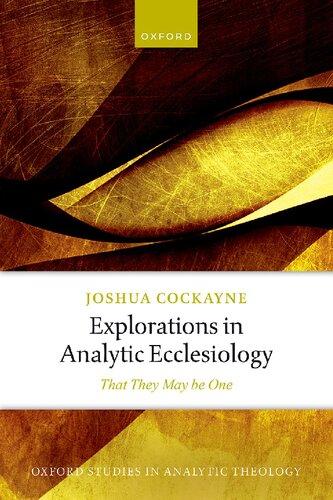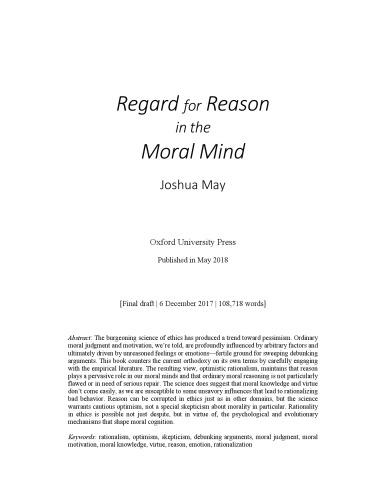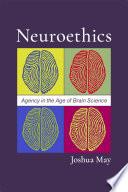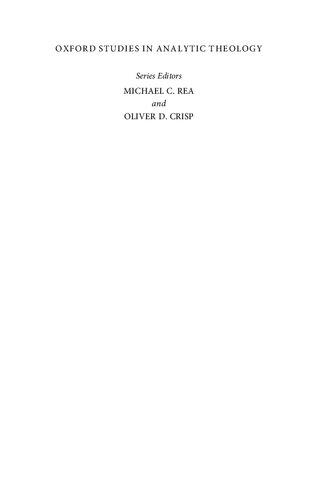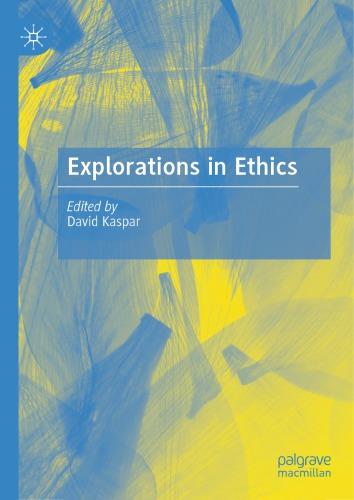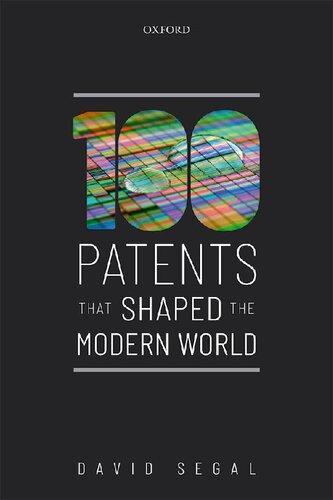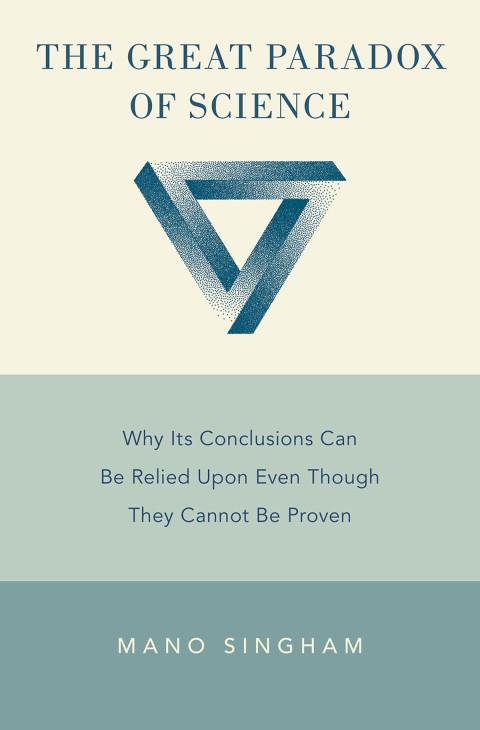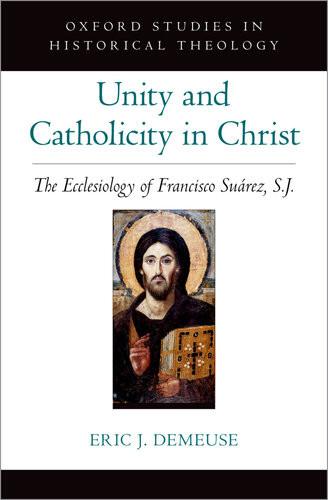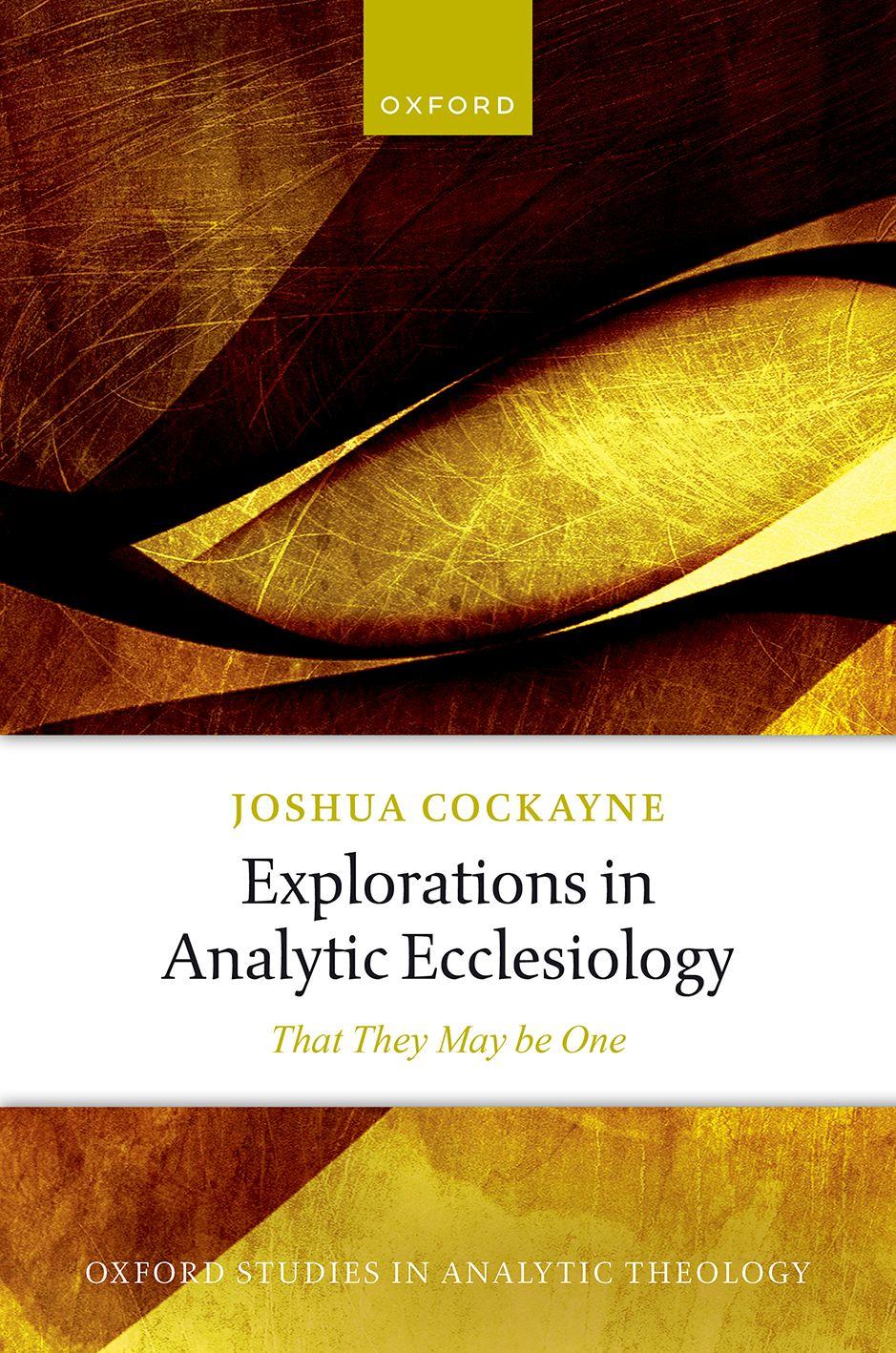Visit to download the full and correct content document: https://ebookmass.com/product/explorations-in-analytic-ecclesiology-that-they-may-b e-one-1st-edition-joshua-cockayne/
More products digital (pdf, epub, mobi) instant download maybe you interests ...
Regard for Reason in the Moral Mind Joshua May
https://ebookmass.com/product/regard-for-reason-in-the-moralmind-joshua-may/
Neuroethics: Agency in the Age of Brain Science Joshua May
https://ebookmass.com/product/neuroethics-agency-in-the-age-ofbrain-science-joshua-may/
Essays in Analytic Theology Michael Rea
https://ebookmass.com/product/essays-in-analytic-theologymichael-rea/
Explorations In Ethics 1st Edition Edition David Kaspar
https://ebookmass.com/product/explorations-in-ethics-1st-editionedition-david-kaspar/
Classrooms That Work: They Can All Read and Write https://ebookmass.com/product/classrooms-that-work-they-can-allread-and-write/
One Last Shot (Alaska Air One Rescue Book 1) Susan May
Warren https://ebookmass.com/product/one-last-shot-alaska-air-onerescue-book-1-susan-may-warren/
One Hundred Patents That Shaped The Modern World 1st Edition David Segal
https://ebookmass.com/product/one-hundred-patents-that-shapedthe-modern-world-1st-edition-david-segal/
The Great Paradox of Science: Why Its Conclusions Can Be Relied Upon Even Though They Cannot Be Proven Mano Singham
https://ebookmass.com/product/the-great-paradox-of-science-whyits-conclusions-can-be-relied-upon-even-though-they-cannot-beproven-mano-singham/
Unity and Catholicity in Christ: The Ecclesiology of Francisco Suarez, S.J. Eric J Demeuse
https://ebookmass.com/product/unity-and-catholicity-in-christthe-ecclesiology-of-francisco-suarez-s-j-eric-j-demeuse/
SeriesEditors MichaelC.ReaOliverD.Crisp
OXFORDSTUDIESINANALYTICTHEOLOGY AnalyticTheologyutilizesthetoolsandmethodsofcontemporaryanalyticphilosophy forthepurposesofconstructiveChristiantheology,payingattentiontotheChristian traditionanddevelopmentofdoctrine.Thisinnovativeseriesofstudiesshowcases highquality,cutting-edgeresearchinthisarea,inmonographsandsymposia.
Atonement EleonoreStump
Humility,Pride,andChristianVirtueTheory KentDunnington
InDefenseofExtendedConciliarChristology APhilosophicalEssay TimothyPawl
LoveDivine
ASystematicAccountofGod’sLoveforHumanity JordanWessling
ThePrinciplesofJudaism SamuelLebens
VoicesfromtheEdge CentringMarginalizedPerspectivesinAnalyticTheology EditedbyMichellePanchukandMichaelC.Rea EssaysinAnalyticTheology Volume1&2 MichaelC.Rea
TheContradictoryChrist JcBeall
AnalyticTheologyandtheAcademicStudyofReligion WilliamWood
DivineHolinessandDivineAction MarkC.Murphy
ExplorationsinAnalytic Ecclesiology ThatTheyMaybeOne JOSHUACOCKAYNE GreatClarendonStreet,Oxford,OX26DP, UnitedKingdom
OxfordUniversityPressisadepartmentoftheUniversityofOxford. ItfurtherstheUniversity’sobjectiveofexcellenceinresearch,scholarship, andeducationbypublishingworldwide.Oxfordisaregisteredtrademarkof OxfordUniversityPressintheUKandincertainothercountries
©JoshuaCockayne2022
Themoralrightsoftheauthorhavebeenasserted
FirstEditionpublishedin2022
Impression:1
Allrightsreserved.Nopartofthispublicationmaybereproduced,storedin aretrievalsystem,ortransmitted,inanyformorbyanymeans,withoutthe priorpermissioninwritingofOxfordUniversityPress,orasexpresslypermitted bylaw,bylicenceorundertermsagreedwiththeappropriatereprographics rightsorganization.Enquiriesconcerningreproductionoutsidethescopeofthe aboveshouldbesenttotheRightsDepartment,OxfordUniversityPress,atthe addressabove
Youmustnotcirculatethisworkinanyotherform andyoumustimposethissameconditiononanyacquirer
PublishedintheUnitedStatesofAmericabyOxfordUniversityPress 198MadisonAvenue,NewYork,NY10016,UnitedStatesofAmerica
BritishLibraryCataloguinginPublicationData
Dataavailable
LibraryofCongressControlNumber:2022935030
ISBN978–0–19–284460–6
DOI:10.1093/oso/9780192844606.001.0001
Printedandboundby CPIGroup(UK)Ltd,Croydon,CR04YY
LinkstothirdpartywebsitesareprovidedbyOxfordingoodfaithand forinformationonly.Oxforddisclaimsanyresponsibilityforthematerials containedinanythirdpartywebsitereferencedinthiswork.
ForEleanor Preface 1.AnalyticTheologyandEcclesiology Whileanalytictheologyisstillayoungandemergingdiscipline,thelackof workonecclesiologywithinthis fieldisstriking.¹Despitepath-breakingwork onmanyofthecoredoctrinesoftheChristianfaith,workonecclesiologyhas notreceivedthesameshareofattention.Analytictheology,asIapproachit,is committedtoexplicatingthecoreclaimsoftheChristiantradition,usingthe toolsofcontemporaryanalyticphilosophy.²Sincebeliefinthe ‘oneholy, catholic,andapostolicChurch’ isacoredoctrineofthistradition,³itseems obviousthatanalytictheologiansshouldpayattentiontothisimportantarea oftheology.Therehavebeennumerouscallstoaddressthelackofecclesiology inanalytictheology.InTomMcCall’ s AnInvitationtoAnalyticTheology, whichisseenbymanyasthego-tointroductiontoanalytictheology,hewrites, considertheunderdevelopedareasofinquiryinecclesiology.Whatisthe church?Isitbestunderstoodasafour-dimensionalentity?Whatistherelation ofthe “ one ” tothe “ many ” inecclesiology?Whathappensintheliturgy? WhatdowelearnfromtheliturgyaboutGod,Christ,sinandsalvation?How shouldweunderstandthesacraments?Whatisthemissionofthechurch? Whathappensinactsofministry?Thesequestions,andmanymore,largely awaitfurtherexplorationandanalysis.⁴
McCallisrightthatthesequestionshavelargelygoneunaskedbyanalytic theologians.Thisbookaimstobeginthistaskofexplorationintothenature andlifeoftheChurchbyaddressingtheissueoftheChurch’sunityinChrist throughtheHolySpirit.
OneareathathasseensomegrowthsinceMcCallwrotethesewordsisthe discussionofChristianliturgybyanalyticthinkers.Inhisaddresstothe40th
¹Afewexceptionsincludethecontributionstothespecialissueof TheoLogica onAnalytic Ecclesiology(seeCockayneandEfird,2020),achapterofAbraham(2018),andachapterinCrisp (2022).
²Seechapter1ofCrisp,2019.³TakenfromtheNiceneCreed.
⁴ McCall,2015:151–2.
AnniversaryoftheSocietyofChristianPhilosophy,theleading figureinthe analyticdiscussionofliturgy,NicholasWolterstorff,reflectedontheneedfor moreworkinthisarea.InWolterstorff ’swords: ‘Iwouldlovetoseea floweringofdiscussionaboutliturgyinthenextdecadeortwo,perhapsthat floweringisbeginning....Ihavecomemyselftothinkthatliturgyisinfact oneofthemostchallengingandfascinating fieldsforphilosophicalinquiry.’⁵
The ‘flowering’ towhichherefersisexemplifiedbythethreerecentbooksand anumberofarticlespennedbyWolterstorffandTerenceCuneo.Here, theyexplorethephilosophicalsignificanceofChristianliturgy.⁶ Butas Wolterstorff ’scommentsmakeclear,thereisstilltomoretobedone.As Ihavearguedelsewhere,⁷ thediscussionofliturgyinanalytictheologywould beenrichedbygainingclarityonthenatureoftheChurch.InWolterstorff ’ s words, ‘Thechurchenactstheliturgynottosatisfytheneedsanddesiresof individualcongregantsbuttoworshipGod ....It’snottheindividualmemberswhodothesethingssimultaneously;it’stheassembledbodythatdoes thesethings.’⁸ Thisseemsrighttome.Andyet,thediscussionofliturgyinthe analytictraditionhasreallyonlyscratchedthesurfaceontherelationbetween theChurchanditsworship.Thus,thepresentvolumeaimstoaddressthelack ofecclesiologyinanalytictheology,whilstalsoseekingtoexpandthediscussionofliturgy.
2.TheScopeoftheDiscussion Beforewecanproceed,someclarificationsaboutthescopeofthepresent volumearerequired.First,itisnotwithinthescopeofthisbooktooffera comprehensiveecclesiologywhichpresentsafar-rangingaccountofthe natureandlifeoftheChurch.Rather,asthesubtitleofthebookalludesto thattheymaybe one thefocusofthediscussionisontheissueoftheunity, oroneness,oftheChurch.Thatis,thevolumeseekstoofferanaccountof whatitmeansfortheChurchtobeone,andtoconsidertheimplicationsof thisaccountsfortheliturgicalandsacramentallifeoftheChurch.Assuch, therearemanyissuesonwhichIwillremainsilent.Myhopeisthatthisisnot theendofthediscussionofecclesiologyintheanalytictraditionandthat floweringofliturgicaltheologyintheanalytictradition,ofwhichWolterstorff describes,willalsoextendtothestudyoftheChurch.
⁵ Wolterstorff,2018. ⁶ IsummarizethisliteratureinCockayne(2018a,2018b).
⁷ SeeCockayne,2021b. ⁸ Wolterstorff,2015b:11.
Secondly,abriefwordonmethodology.Throughoutthebook,Iseekto drawfromworkincontemporaryanalyticphilosophyinordertoexplorethe natureoftheChurch’sunity.Thatistosay,thebookbelongsinthetradition ofanalytictheology.Incertainrespects,itfollowstheapproachadvocatedby thelateDavidEfird,ofoffering ‘philosophicalexplanations’ toissuesin theology.⁹ AsRobertNozickdescribesit,aphilosophicalexplanationoffers onepossibleexplanationofhow X mightbeso,giventhat Z isthecase.¹⁰ Inthe contextofecclesiology,theassumptionsorlimitationsofthediscussion(Z)are providedbyourtheologicalreflectionsfromScriptureandtradition.So,for example,Chapter2offersadiscussionofthetheologicalclaimthattheChurch isonethroughtheworkoftheHolySpiritandthenturnstorecentworkin analyticphilosophytoprovideoneexplanationofhowthismightbeso,within theparametersspecifiedinourtheologicalexploration.
However,whereIdifferfromEfirdisthatIthinkofsuchworkaspartofthe theologicaltask,whereasEfirdmaintaineditwasonlyreallyakindofapplied philosophy.IntheworkofOliverCrisp,wecanseethekindofphilosophical explanationadvocatedbyEfirdpressedintotheserviceoftheologicalmodel building.AsCrispdescribesit,
Bya “model” ...Imeana theoreticalconstructionthatonlyapproximatesto verisimilitude,offeringasimplifiedaccountofaparticulardatasetor(inthis case)clusteroftheologicaldoctrines .... Thisalsocomportswithanintellectualhumilityonthepartofthetheologian:itmaybethatweareunableto capturethetruth[ofthematter]...becauseweareincapableofunderstandingitas finitecreaturesordonothavetheepistemicaccesstocomprehend thedoctrine,whichispartofthemysteryofthedivinenature.Similarly,in contemporaryphysicsNewtonianclassicalmechanicscanstillbeusedto generateaccurateresultswhenappliedtolarge-scalemacroscopicobjects thatarenottravelingatveryhighvelocities,thoughitisunderstoodthat classicalmechanicsis,strictlyspeaking,anapproximationtothetruthofthe matterratherthanthetruthsimpliciter.¹¹
Thus,inthespiritofEfirdandCrisp,thisprojectoffersa model ofecclesiology whichservestomakeclearwhatitmeanstothinkoftheChurchasonein ChristthroughthepoweroftheHolySpirit,butonewhichneverpretendsto gettothefulltruthofthematter.
⁹ SeeCockayneandWorsley(2021)foradiscussiononEfird’sapproachtoanalytictheology. ¹⁰ Nozick,1981.¹¹Crisp,2019:54–5.
Suchanapproachisnotwithoutprecedentinecclesiology,andbynomeans isitlimitedto analytic theology.Forinstance,asAveryDullesdescribesinthe introductiontohisbook ModelsoftheChurch,byoffering ‘models’ , ‘aspects’ , or ‘ dimensions ’ oftheChurch,weneverdescribetheChurch ‘ directly ’ , sincetheChurchisultimatelymysterious.¹²Instead,theseindirectdescriptionsoftheChurchcanallowustogrowinunderstanding,solongasthese descriptionsremain indirect. Similarly,byprovidingaphilosophical explanationofonepossiblewayinwhichtheChurchmaybeunitedyet divided,thesamemightbesaid.TheexplanationswhichIexploreinthe chaptersofthisbookaremodels,intendedtoexpandourunderstandingof theChurch,butwithoutseekingtogiveanultimateaccountofthe Church’ smysteriouslife.
Thirdly,whilstdrawingfromtheconceptsandideasfoundinanalytic literatureonthenatureofsocialgroupscanproveilluminatinginoffering modelsoftheChurch,wecannotapplythesediscussionswithoutqualification.AnyattempttoreducetheChurchtothelevelofthehumaninstitutions whichsocialmetaphysiciansandepistemologistshaveastheirsubject-matter willleadustomakingtheChurchinourownimage.Andso,ouraimsmust remainmodest.
Lastly,whilstIhopethereismuchinthisbookwhichwillinterestthose fromarangeoftraditions,thisprojectisintendedneithertobeentirely ecumenical,butnorisitconstrainedto oneparticulartheologicaltradition. IdonotpretendtoofferanaccountoftheChurchwithwhichallwill agree.Iamscepticalaboutthepossibilityofofferingatrulyinclusive ecumenicalecclesiologywithoutdistortingimportanttheologicalclaims. Forinstance,Protestantsandnon-Protestantswillthinkverydifferently aboutissuesofwhohasauthoritytospeakonbehalfoftheoneChurch. Tryingtoforcetheseviewstogetherisnotapromisingapproach. Moreover,whileIamanordainedAnglican,Idonotattempttoprovide anAnglicanecclesiologywhichisapplicableonlytothoseinmyown tradition.ThetheologicalvoicesIdrawfromthroughoutthebookare varied aswellseekingtogroundthediscussioninthewitnessof Scripture,eachchapterconsidersatheological fi gurefromthetradition. ThebookdrawsinsightsfromLutheran,Reformed,Methodist,Eastern Orthodox,RomanCatholic,andAnglicantraditions.Theinsightsgleaned from fi guresinthesetraditionsprovidethestartingpoints,orcorrectives, tothemodelsdevelopedineachchapter.
¹²Dulles,1978:14.
3.OneChurch:ASummary BeforeembarkingonourexplorationoftheunityoftheChurch,itisworth beginningwithabigpicturesummaryofthebook’sargument,suchthatwe mightseehowthepiecesofthediscussion fittogetherasawhole.
ThecentralthesisofthebookisthattheChurchisasocialbody,composed ofmanyindividualmembers,unitedthroughtheworkoftheHolySpirittobe thebodyofChrist.Callthistheunitythesis.Thisthesisisthenexpandedin twodirections: first,conceptualandsecond,practical.
Webeginwiththeconceptual.Chapters1–3providea model oftheChurch whichseekstoofferaphilosophicalexplanationofhowtheunitythesismight beso.Chapter1isreallyapieceofconceptualgroundwork,whichmustbelaid beforethistaskofmodel-buildingcanbegin.Morespecifically,Iseektoclarify therelationshipbetweenindividualismandcollectivismintheChurch. FocusingonJesus’ prayerinJohn17,thathisdisciples maybeone,Iargue thattospeakoftheonenessoftheChurchisnotacalltoenforcehumanly imposedunityontheChurch,butrather,itistoclaimthattheChurchisone invirtueofitsrelationtotheoneGod.Thereasonconceptualgroundworkis inorderisthatsuchclaimsaboutsocialonenessintheChurcharesometimes treatedwithsuspicion,asiftheyentailthatindividualresponsibilityisatrisk bytalkingofsocialwholes.Itisthereforeimportanttomakeclearjustwhatthe commitmentsadvancedbymyecclesiologicalmodelare.
Thisdiscussionofindividualismandcollectivismisadvancedintwodirections,onetheologicalandonephilosophical.First,IconsiderDietrich Bonhoeffer’sassessmentofHegeliananthropologyinhisdoctoralthesis, SanctorumCommunio. BonhoefferemphasizesthatwhiletheHegeliansmay berighttoemphasizetheimportanceofcommunityfortheChristianlife,they downplaythesignificanceoftheindividualbeforeGod.Thus,Bonhoeffer thinks,boththeindividual and theChurchmustrespondtoGodinfaith. Secondly,Iarguethatrecentphilosophicaldevelopmentscanhelpclarify Bonhoeffer’stheologicalclaim.Here,IunpackPhilipPettit’sdiscussionof individualismincontemporarypoliticalphilosophy.Pettitcontendsthatindividualismcommitsonetotheviewthatsocialrealitiesneveroverrideor undermineindividualagency,butitdoesnotprecludeacommitmentto holism,accordingtowhichhumanthoughtmustberealizedincommunity. Thus,drawingfromPettitandBonhoeffer,Iarguethattheapparentdisagreementonindividualismisterminological,ratherthansubstantial.Wecan endorsethethesisthatindividualsmustrelatetoGod,andyetstressthat theirdoingsoisboundupinthelifeofcommunity.Individualismdoesnot
undermineacommitmenttotherealityofsocialgroups,northeimportance ofthesegroupsforhumanthought.Andso,wecanproceedtoofferamodelof thesocialontologyoftheChurchwithoutdownplayingtheimportanceof individualautonomyorresponsibility.
Withthispresuppositionoutlined,Chapters2and3offeraconstructive modelofthenatureoftheChurchinordertoexpoundtheunitythesis. Chapter2beginsbyidentifyingwhatPaulAvishasdescribedasthe ‘unbearableparadox’ ofecclesiology;¹³thatis,IaskhowitcouldbethattheChurchis oneinChrist,unitedbytheworkoftheHolySpirit,despitetheoverwhelming divisionanddiscorditdisplays.IarguethatunityinthebodyoftheChurch mustbelocatednotinhumanorganizationorstructure,butonlyinthework ofthe ‘oneSpirit’ inwhom ‘wewereallarebaptised’ (1Cor.12:13).Thus,a socialontologyoftheChurchmustemphasizetheSpiritastheprimaryagent atworkwithinit.Byoutliningrecentworkontheontologyofsocialgroups, Iarguethatfunctionalistaccountsofgroupagencycanhelpustoseehowthe Churchasasocialrealitymightbeunitedbyitsdecision-makingprocedures.¹⁴ Unliketheothersocialbodiesdiscussedinthisliterature,however,theChurch doesnotderiveitsdecision-makingfromthegroupaggregationofitsmembers,butinstead,fromtheworkoftheSpiritwithinthecommunity.Applying RichardHooker’sworkonAnglicanChurchpolity,Iarguethatonemeansof discerningtheSpirit’sworkmightbethroughthestructuresoftheinstitutionalchurch,solongasthesestructuresdon’tseekto replace theSpirit’swork intheChurch.
BuildingonthisfunctionalistontologyoftheChurch,Chapter3seeks toofferamodelforunderstandingtheclaimthattheChurch is thebodyof Christ.AfterconsideringGregoryofNyssa’ sreflectionsontheChurchasthe bodyofChrist,Iseektoofferaphilosophicalmodelwhichcanhelptoelucidate hisclaims.Iarguethatrecentworkonthenatureofextendedcognitioninthe philosophyofmindcanhelptoshedlightontherelationbetweentheone ChurchandtheonebodyofChrist.¹⁵ AsbothRichardCrossandJamesArcadi haveshown,thisphilosophicalliterature(whichseekstoshowthatcognition canbeextendedbeyondthehumanbrainintoexternalartefacts)canhelp providemodelsforunderstandingboththeincarnationandtheEucharist.¹⁶ Here,IdevelopbothCross’sandArcadi’sincarnationalmetaphysicstoexplain howtheChurchmightbethoughtofasthebodyofChrist.However,unlikethe
¹³Avis,2018:24.¹⁴ Seee.g.ListandPettit,2011;Tollefsen,2015;Collins,2019.
¹⁵ Seee.g.Clark,2010;ClarkandChalmers,2010;Tollefsen,2015.
¹⁶ Arcadi,2018;Cross,2011.
Eucharistandtheincarnation,thedoctrineoftheChurchdoesnotthinkof Christasextendedintosomeartefactortangibleobject,butintoasocialbody. TogiveametaphysicsoftheChurchasthebodyofChrist,then,Ibuildon workin socially extendedcognition,whichseekstoshowthewaysinwhich mindsareextendedintootherminds.Thiscanprovideonemodelforthinking abouthowtheChurchasagroupagentmightparticipateinthebodyof Christ.
Wethenmovefromconceptualtopractical.IfChapters1–3askthe question: ‘WhatistheChurch?’,thenChapters4–7askthequestion: ‘What doestheChurch do?’.Theunitythesisandthetheologicalmodelofferedin Chapters1–3arethenusedtohelpusexaminethestudyofthesacraments (specifically,baptismandEucharist)andliturgy(bothinsideandoutsideof formalchurchworship).Moreover,thisdiscussionofwhattheChurchdoes focusesonthequestionofhowtheactivitiesoftheChurchservetheunityof theChurch.Thus,weareabletoseehowthemodelofferedinChapter1–3 mightinformthepracticesthatareperformedbythemembersoftheone Church.
InChapter4,IconsidertheroleofbaptismintheoneChurch.Thechapter focusesontheroleofabaptismalliturgyasaninstanceofinitiationintothe communityoftheChurch,reflectingontheimplicationsofthisinitiationfor howanewmemberrelatestothegroup.First,Iconsiderrecentphilosophical workonthenatureofpromises.Iarguethatthepromisesmadeinbaptism mightbeunderstoodasinstancesofwhatMargaretGilberthascalled ‘joint commitments’.¹⁷ AsGilbertshows,promising,understoodasaninstanceof jointcommitment,alwaysentailscertainobligationsofbothpromisorand promisee,andthesameisclearlytrueinthepromisesofbaptism.However, whilstGilbert’saccountcapturesimportantfeaturesofbaptismalobligations inlocalcommunities,itfarespoorlywhenextendingthistoconsiderthe relationshiptotheChurchasawhole.Wemustunderstandthesepromises asaresponsetoworkofthepersonsoftheTrinity,whodeterminethegrounds ofmembershipintheChurch,ratherthaneffectingthemembershipbyitself. Here,IunpackJohnCalvin’snotionofbaptismasa signandseal ofthework alreadyachievedthroughChrist.Finally,Iconsiderhowthispositioncanbe extendedtothinkaboutthecaseoftheinfantbaptism.Understandingbaptism notasaninstanceofpersonaltestimony,butasaninitiationintothefamilyof theChurchallowsustoseethatmakingcommitmentsonbehalfofachildcan bemadesenseofwithinourunderstandingoftheChurch’sontology.
¹⁷ Gilbert,2011.
Whereasbaptismisaonceinalifetimesignofourmembershipintheone Church,theEuchariststandsasaperpetualsignofourmembershipintothe body.TheNewTestamentmakesitclearthatsharingintheonebread somehowallowsustosharemorefullyinthebodyofChrist(1Cor.10).In Chapter5,IarguethattheEucharistiscentraltoourunderstandingofhowwe participateintheonebodyoftheChurchbysharingthebodyofChristinthe onebread.First,drawingfromrecentworkinsocialpsychology,Ireflecton thesignificanceofsharedexperiencesandritualizedmovementforcommunitycohesion,arguingthatthismightplayaroleintheoutwardformsofunity intheChurch.WhiletheseaccountscanexplainthepsychologicalmechanismsbehindtheEucharistasahumanritual,andtherebyprovidesome explanationof how theSpiritenactsunitythroughthesacramentsofthe Church,anaccountwhichissolelypsychologicalriskslocatingunityinthe wrongplace.Secondly,then,IofferanaccountoftheEucharistasunitive throughtherealpresenceofChrist.Here,Idevelopadiscussionfromthe AmericanReformedtheologian,JohnWilliamsonNevin,asheseeksto emphasizetheimportanceofChrist’spresenceintheEucharistforuniting theChurch.
The finaltwochaptersconsidertheimplicationsofourdiscussionofunity forthepracticeofliturgy.First,inChapter6,IofferanaccountofparticipationinthelifeoftheChurchthroughtheliturgiesofgatheredworship.The discussionisframedaroundEvelynUnderhill’sthreemodesofliturgical participation:jointaction,representativeaction,andcorporatesilence.¹⁸ Expandingthesethreeaccountsofliturgicalaction,Idrawfromrecentwork inanalyticphilosophy.Onjointaction,Iconsiderhowdiscussionsofshared agencycanhelpexplainwhatistoactjointlywithanotherpersoninliturgy, say,inreadingaliturgicalscriptatthesametime.Onelimitationofsuch accounts,Iargue,isthattheycannotofferinclusiveaccountsofChurchaction whichexplainhowalltheChurch’smembers(includingthosewithcognitive impairmentsandyoungchildren)contributetotheactionsoftheChurchasa widerbody.Ithenconsiderhowtheapplicationoftheliteratureongroup agency(seeChapter2)canexplainthenotionofrepresentativeaction.Inthe practiceofordination,forinstance,oneindividualisauthorizedtoperform liturgicalactionsonbehalfofthewholecommunity.Iarguethatthisshouldbe understoodinasimilarmannertothewayinwhichweauthorizepoliticiansto actonourbehalfthroughvoting.Thiscanalsobeextended,Ithink,toshow hownon-paradigmparticipantsintheliturgycanbebroughtintothegroup’ s
¹⁸ Underhill,1936.
liturgy,eveniftheylackthecapacitytoengageinjointaction.Finally, Iconsiderthenatureofcorporatesilenceinliturgy.Drawingfromworkin thephilosophyofperception,Iarguethatliturgicalsilenceisnotthesameas absolutesilencebut,instead,standsasacontrasttotheotheraspectsofthe liturgy.Inthespacewhichsilenceallows,ourindividualactionsareunitedby theworkoftheHolySpirittoformgroupactions,thusemphasizingtheneed forbothliturgicalactionandleavingspacefortheunitingworkoftheSpiritin worship.
Iconclude,inthe finalchapter,byconsideringhowtheliturgyofthe Churchextendsbeyondactsofgatheredworship.Evenifwerecognizethat theChurchisoneintheSpirit,wemustlamentwhentheoutwardsofthe Churchcommitactsofabhorrenceintheworld.Reflectingonthediscussion ofworshipandjusticeintheminorprophetsoftheHebrewBible(seeAmos 5:21–4,forinstance),Ishowthatthereisacloseconnectionbetweenworship andethics.BringingAugustine’sdiscussionofsocialjusticetobearonthe ethicsofworship,Ishowthatweshouldlooktoanaccountofgroupinjustice tobestunderstandcasesofabuseandinjusticeintheChurch.Then,Iturnto recentanalyticworktohelpexpandthisclaim.First,drawingfromworkby MirandaFricker,Iconsiderhowresponsibilitiesmightbesharedbytwoor moreagents.However,Iargue,suchaccountsarelimited.Justasshared agencyaccountsofliturgicalactionareinsufficientlyinclusive,collectivevirtue accountsdonotexplainhownon-paradigmparticipantsinacommunitycan contributetoitsvirtueorvice.Thus,buildingonthediscussionsoffunctionalistsocialontology,Iapplyanaccountof group virtuetothecontextof worship.Iarguethatweshouldthinkofgroupinjusticeinroughlythesame waythatwethinkofindividualinjustice;asthecommunity’sfailingtodowhat itoughttodo,namely,tolove.Finally,Iconcludebyconsideringanumberof questionsforthinkingabouthowweshouldrespondtoissuesofgroup injusticewithinourcommunities:Whenshouldanindividualsubmittoa churchcommunityandwhenshouldtheyprotest?Whendoesanactiondone onbehalfoftheChurchbecomedisassociatedwiththeChurchasawhole?
BuildingonStephanieCollins’ discussionofgroupresponsibility,Iarguethat, asamemberoftheChurch,onehasaresponsibilitytoprotestactionswithin theChurchwhichonetakestodivergefromtheChurch’spurposeinChrist throughtheSpirit.Oneformthismighttake,Iargue,isthecorporateactof lamentinliturgy.
Whilstthemodelexpoundedinthisbookhasmanyfacets,thecorethesis remainsthesamethroughoutthechapters:theChurchisonlyoneinvirtueof
theworkoftheFather,Son,andHolySpiritatworkinthemidstofthosewho aremembersoftheoneChurch.Inunderstandingthelifeofthebodyof Christ,wemustseethatinalltheChurchdoes whetherinsacraments,in corporateliturgy,orinactingintheworld unitycanonlyariseinand throughtheworkofGod.
Acknowledgements ThisbookmarkstheculminationoffouryearsofresearchattheLogos InstituteforAnalyticandExegeticalTheologyattheUniversityof StAndrews.Thecolleagues,students,andvisitingscholarswhohaveshaped thisprojectaretoonumeroustomention.
Iinitiallyjoinedtheinstitutein2017toworkonanalytictheologyand liturgy,butitsoonbecameapparentthattheprojectIwantedtowriteneeded totakeamuchbroaderapproach.Ifwewanttounderstandwhatitisto participateintheworshipoftheChurch,thenwemust firstunderstandthe natureandlifeoftheChurch.
AndrewTorrancehasbeenaconstantsourceofencouragement,challenge, andfriendshipoverthepastfouryears.Withinmy firstmonthattheLogos Institute,AndrewhadsuggestedIreadhisgrandfather’sbook, Worship, CommunityandTheTriuneGodofGrace.Itscontentsshapednotonlymy academicinterests,butalsomyapproachtoministryandliturgyinthe Church.IamgratefulforthesupportofAlanTorranceandOliverCrispas directorsoftheLogosInstitute,bothofwhomhavebeenrelentlessintheir supportandfriendship.Icouldnothavewishedforabetterwaytospendfour years,norforbettercolleaguestoworkalongside.
JonathanRutledgeandKoertVerhagenhaveprovedtobeinvaluable sourcesoftheologicalcorrectionandphilosophicalchallenge,butmost importantly,theyhavebeenfellowconnoisseursofcoffeeandwhiskyover thepastfouryears.Thisbookwouldnotexistwithouttheirinfluence,support, andfriendship.
Duringthe2020–1academicyear,agroupofcolleaguesintheinstitute convenedtoprovidefeedbackononeanother’swork,buildingonamutual interestonthethemeofparticipation.Thegroupnotonlyprovidedfeedback onmanyofthechaptersfromthisbook,butalsoprovedtobeameltingpotof ideaswhichinspiredmanyofthedirectionsthisbookendeduptaking.Thank youtoOliverCrisp,JoannaLeidenhag,JonathanRutledge,andAndrew Torranceforparticipatinginthisgroup.
Alongsidethewritingofthisbook,Ihavealsoembarkedontwocollaborativeprojects.First,togetherwithmygoodfriendsScottHarrowerandPreston Hill,IhavewrittenabookexploringhowtheChurchmightrespondtoissues
oftrauma.Thesegentlemen(therearenonetowhomthistitleismoresuited) havebeenasourceofsupport,friendship,andmutualcareoverthepast coupleofyears,openingmyeyestotherealityofthedamagetheChurch hassometimesinflictedonsurvivorsoftrauma.IamthankfultoGodfortheir companionshipandlookforwardtomanymorejointventuresinthefuture. Secondly,IhavebeengratefulfortheopportunitytocollaboratewithGideon Salter,apsychologistattheUniversityofStAndrewsonanumberofgrant projectsandarticles,exploringhowpsychologycanhelpustounderstandthe natureofcorporateworship.Someofthismaterialhasmadeitswayintothe presentmonograph,butourconversationshaveinspiredmuchmorethanis onthepage.InGideon,Ihavefoundafellowlong-sufferingfollowerofthe Englishfootballteam,andalikemindedco-author.
Oneofthemostwonderfulpartsofbeingemployedbyauniversityisbeing abletoteachsomeofthebrightesttheologicalmindsintheworld.Mydoctoral students:D.T.Everhart,PrestonHill,MadelineJackson,DanielSpencer,and JasonStigallhaveeachbeenpeersandfriendsinverydifferentways.Manyof themhavegiventheirtimetograpplingwiththecontentsofthisbookand discussingideaslateintothenightoveraglassofscotch.Iamthankfulforthe wayseachofthemhavehelpedshapethisprojectandIamexcitedtoseehow theirowncareersandprojectswilldevelop.Iamalsoblessedtohavetaught outstandingMLittcandidates,manyofwhomhavebeeninflictedwiththe chaptersofthisbookascompulsoryreadingandhaveprovidedmanyimportantinsights.
Anumberofpeoplehavebeenkindenoughtogivefeedbackondraft chaptersofthebook.IamgratefultoHarveyCawdron,AndrewEsnouf, DerekKing,SarahShin,andChrisWhytefortheirinsightfulfeedback, whichhastransformedmyownthinkingonmanyissues.Thetwoanonymous refereesfromOxfordUniversityPressprovidedtimelydirectiontotheproject initsinfancyandraisedmanyimportantpointsforclarificationasitwas nearingcompletion.Iamgratefultothemboth.
Beforehisuntimelydeath,thelateDavidEfirdprovidedextensivecommentsonmanyofthechapters.Iamthankfultohaveknownhimandhe continuestoshapemysenseofvocationtothisday.Theresearchgroup startedbyDavidatYork theStBenedictSocietyforPhilosophyofReligion andPhilosophicalTheology kindlyagreedtoreunitetoprovidefeedbackon a finaldraftofthemanuscript.OurFridaymorningZoommeetingsspanned threecountries(Chile,England,andScotland)andIamverythankfulto DanielMolto,JackWarman,andDavidWorsleyfortheirattentiontodetail andprobingquestions,nottomentiontheircontinuedfriendship.
Thecompletionofthismanuscriptalsocoincideswiththeendofmytimeat theLogosInstituteandamoveintofulltimeministryintheChurch.Assuch, thisbookisnotamereacademicstudy,butareflectionontheChurchIhave committedtoloveandserve.ThecongregationsofG2,YorkandSaint Andrew’sEpiscopalChurch,StAndrewshaveshapedmyfaithandsenseof vocationinverydifferentways.InChristianSelvaratnamandTrevorHart, Ihavefoundlike-mindedcolleaguesinministryandexemplaryrolemodelsof ordainedministry.Althoughhemaynotalwayshaverealizedit,myweekly coffeemeetingswithTrevorhavealsoprovedtobeanexcellenttestingground forexploringmanyoftheideasinthisbook.Finally,asIembarkonanew ministryatHolyTrinityChurchandStGeorge’sChurchinLeeds,Iam thankfultotheiropennessandhospitalityinwelcomingusintotheircommunityandIamexcitedtogetstartedinservingtheoneChurchofChrist togetherwiththem.
Finally,thanksareduetomywife,EleanorandwonderfulchildrenJudah, Emmeline,andZachary.Aswellasprovidingasourceoflaughter,challenge andlove,EleanordailysharpensmyfaithinChristanddeepensmydevotion toservinghisChurch.Iamlookingforwardtomanymoreyearsservingthe Churchalongsideyou.
1.ThatTheyMayBeOne:TheIndividualandtheCommunity oftheChurch1
1.ThatTheyMayBeOne1
2.IndividualismvsCollectivism4
3.Bonhoeffer’sPhilosophicallyInformedEcclesiology8
4.IndividualismandItsImplications12
5.ClarifyingtheDebate16
6.Conclusion18
2.OneSpirit:TheChurchasaGroupAgent20
1.TheUnbearableParadoxofEcclesiology20
2.TheChurchastheBodyofChristthroughtheAgencyoftheSpirit21
3.GroupRealismExpanded24
4.GroupRealismandtheChurch30
4.1RedundantGroupRealismandtheSocialOntologyofDictatorships35
4.2TheBenevolentDictator:GroupAgencyintheOneSpirit38
4.3PolityandDiscernmentintheLifeoftheOneChurch40
4.4RogueAgencyandtheSinoftheChurch44
5.Conclusion46
3.OneLordJesusChrist:TheChurchastheSociallyExtended BodyofChrist48
1.TheChurchastheBodyofChrist48
1.1ParticipationintheOneBodyofChrist49
1.2IdentifyingtheChurchastheBodyofChrist54
2.FunctionalismandExtendedMinds55
2.1BodilyExtensionandtheParityPrincipleRevised59
3.ArcadiandCrossonTheologicalApplicationsof ActiveExternalism63
4.TheChurchastheExtendedBodyofChrist66 4.1SocialExtension68
4.2TheChurchastheSociallyExtendedBodyofChrist71 5.Conclusion74
4.OneBaptism:GroupMembershipandRitesofInitiation75
1.SocialOntologyandInitiation75
2.PromisingandGroupMembership77
2.1OntheRelationshipbetweenPromisingandMembership82
3.MembershipandAuthorization84
3.1BaptismandSpeechActTheory86
3.2TwoModelsofBaptismalSpeechActs87
3.3TheCalvinianModel91
3.4GroupMembershipandBaptism95
4.InfantBaptismandGroupMembership97
5.Conclusion104
5.OneBread,OneCup:TheEucharistasaSacramentofUnity105
1.MorethanMetaphysics:AnalyticTheologyandEucharisticUnity105
2.Human-to-HumanUnitythroughtheEucharisticRitual107
2.1SocialCohesionandEucharisticRitual107
2.2RemembranceandUnitywiththePast110
3.EucharisticUnityinChrist117
3.1UnityintheEucharisticBodyandtheEcclesialBody118
3.2TheDifferencebetweentheEucharisticBodyandtheEcclesialBody122
3.3YouAreWhatYouEat:TheEucharistasaSourceofUnity124 4.Conclusion130
6.ActingasOne:LiturgyandGroupAction132 1.TheGatheredChurch132
1.1LiturgicalParticipation134
2.Underhill’sPrinciplesofCorporateWorship136
2.1CorporateSilence137
2.2RepresentativeAction138
2.3JointAction138
3.AnAnalyticAccountofGroupLiturgicalAction139
3.1JointAction140
3.2SharedAgencyandLiturgicalAction141
3.3Inclusivity,Belonging,andJointAction145
4.RepresentativeAction147
4.1Inclusivity,Belonging,andRepresentativeAction151
4.2AuthorizationandDiscernment153
5.CorporateSilence154
5.1TheNatureofSilence155
5.2GroupActionandCorporateSilence157
5.3Inclusivity,Belonging,andCorporateSilence159
6.Conclusion160
7.OnePurpose:ExtensiveLiturgyandProtest161
1.GoinPeacetoLoveandServetheLord161
2.SystemicAbuseintheLifeoftheChurch163
3.InjusticeandthePeopleofGod169
3.1SocialJusticeandthePeopleofGod173
4.SocialJusticeasJointCommitment175 4.1SocialJusticeandCollectiveDuties179
5.LiturgicalProtest183 6.Conclusion185
ThatTheyMayBeOne TheIndividualandtheCommunityoftheChurch 1.ThatTheyMayBeOne AfterJesushadspokenthesewords,helookeduptoheavenandsaid, ‘Father,thehourhascome;glorifyyourSonsothattheSonmay glorifyyou,sinceyouhavegivenhimauthorityoverallpeople,togive eternallifetoallwhomyouhavegivenhim....Iamaskingon their behalf;Iamnotaskingonbehalfoftheworld,butonbehalfofthose whomyougaveme,becausetheyareyours.Allmineareyours,and yoursaremine;andIhavebeenglorifiedinthem.AndnowIamno longerintheworld,buttheyareintheworld,andIamcomingtoyou. HolyFather,protecttheminyournamethatyouhavegivenme,so thattheymaybeone,asweareone ...Iasknot onlyonbehalfof these,butalsoonbehalfofthosewhowillbelieveinmethroughtheir word,thattheymayallbeone.Asyou,Father,areinmeandIamin you,maytheyalsobeinus,sothattheworldmaybelievethatyou havesentme.TheglorythatyouhavegivenmeIhavegiventhem,so thattheymaybeone,asweareone,Iinthemandyouinme,thatthey maybecomecompletelyone,sothattheworldmayknowthatyou havesentmeandhavelovedthemevenasyouhavelovedme.
(John17:1–11,20–3)¹
‘Thattheymaybe one ’ . Jesus’ departingprayerforunityintheGospel accordingtoJohnisseenbymanytoofferoneoftheclearestarticulations ofecclesiologyinthegospeltexts.²Itisnotdifficulttoseewhythisisthecase. Chapter17concludesapivotalnarrativeinJohn’stext,precedingtheaccounts ofJesus’ arrestandcrucifixion.Theso-called ‘farewelldiscourse’ (John14–17)
¹Allbiblicalreferencesfrom NewRevisedStandardVersion.²Seee.g.Byers,2017.
2
emphasizestheonenessofChristwiththeFather(14:1–14),thepromiseofthe comingHolySpirit(14:15–31;16:4–15),andavisionofthelifeofChrist’ s disciplesafterhisimpendingdeparture.AlifegroundedintheFatherandthe Sonmustlead,Jesustellshisfollowers,toalifecharacterizedbylove (15:12–13),butarejectionbytheworld(15:18–19).JohndrawsthesediscoursestoaclosewiththestrikingwordsthatChrist’sdiscipleswillbe one just astheFatherandtheSonare one.³
ThisbooktakesasitsstartingpointthisnotionofonenessinChrist.Not onlyisthisnotionkeytounderstandingJohannineecclesiology,⁴ butitisalso thekeytounderstandingecclesiology toutcourt.AnyaccountoftheChurch’ s onenessmustnotdepartfromthisfoundationintheonenessofthepersonsof theTrinity.⁵ Buthowpreciselywearetocharacterizesuchonenessiswhere thingsgetmorecomplex.Wemightthink,forinstance,thattheonenessof Christ’sfollowersdescribedbyJohnimpliesthattheChurchiscalledto overcometheirdisagreementsandtouniteasonebodyacrosstraditions.In hissermononJohn17,theLutherantheologianJohanBlumhardtexemplifies thiswayofthinking,writing, ‘DoweasJesus’ disciplesreallywanttobecome one? ...We must findawaywherewhatyoubelieveIbelieveandwhat Ibelieveyoubelieve.FortheLordsaysinhisprayer, “Ihavegiventhem glorythatyougaveme,thattheymaybeoneasweareone.”ʼ⁶ Blumhardt’ s assumptionhereisthatonenessentailsauniformityofbelief.TheChurch’ s onenessmeansthatImustbelievewhatyoubelieveandviceversa.⁷
Theproblemwithsuchreadingsofthetext,whichstressidealsocial harmonyaboveallelse,isthattheyfailtorecognizewhatisatthefoundation ofJohn’snarrative.Jesus’ prayerinJohn17mustbereadinlightofJohn’ suse ofonenesslanguagethroughoutthegospel.AsAndrewByersputsit, ‘approachesthatunderstand “ one ” assignifyingaunityofsocialharmonyor aunityoffunctionormission donotsufficientlytakethispriornarrative developmentintointerpretativeaccount. ’⁸ Expandingthisnarrativedevelopmentfurther,RichardBauckhamnotesthat ‘Theveryordinarylittleword “ one ” wasatheologicallyverypotentwordfortheJewsoftheSecondTemple periodbecauseofitsoccurrenceintheShema.’⁹ Itwouldnothaveescapeda Jewishaudience’sattentionthatJohnisrepeatedlymakingreferencetoa
³Note,aswillbecomeclearshortly,thepositionIarticulateinthisbookemphasizestheonenessof theChurchasgroundedintheonenessofTrinitarianpersons,notonlytheFatherandtheSon.
⁴ Bauckham,2015:40.
⁵ SeeMcCall(2021:chapter5)foradiscussionoftheTrinitarianimplicationsofJohn17.
⁶ Blumhardt,2019:86.
⁷ ForacritiqueofecumenicalreadingsofJohn,seeMinear(1978:5–13). ⁸ Byers,2017:144.
⁹ Bauckham,2015:23.
crucialliturgicalanddoctrinaltext.TheShemaisperhapstheclosestanalogue totheChristianuseoftheLord’sPrayer,thetwicedailyrecitationofthelines: ‘Hear,OIsrael,theLordourGod,theLordis one ’ (Deut.6:4)wouldmeanthat John’sonenesslanguagewasimmediatelyrecognizable.Justasmentioningthe twowords, ‘OurFather’ hasthepowertoconnotethemeaningandwordsofthe wholeoftheLord’sPrayer,theseeminglyinnocuousword, ‘ one ’ istheologically loadedandthushasimportantimplicationsforunderstandingJohn’susageof theterm.
AsByersargues, ‘InJesus’ prayer,themulti-layeredstrandsofecclesial, Christological,andtheologicalonenessinterfuseinanabbreviatedbutcomplex polyphony.’¹⁰ Throughoutthegospel,Johnusesonenesslanguageindirect referencetotheShema(‘wehaveoneFather’ (8:41)),butalsoinapplicationto Christ(‘theFatherandIareone’ (10:30)),andChrist’ s flock(‘ one flock,one Shepherd’ (10:16)).Johnispullingfromavarietyofsources.Forinstance,aswell asalludingtotheShema,JohndrawsfromthemessianictextsofEzekiel34and 37anditsreferencetothe ‘oneShepherd’ andthe ‘oneking’ whowillunitethe dividednationsofIsrael.Thus,John’suseof ‘ one ’ inthegospelisbothintentional andcumulative;heaimsatacarefulweavingtogetheroftheonenesstheologyof theShemawiththemessianicandnationalemphaseson theoneShepherdwho hascometoregatherGod’sonepeople.AsByerssummarizes, ‘Tobe “ one ” in Johannineperspectiveistobe(re)gatheredintothedivinecommunityofthe Father(Israel’ s “ one ” God)andJesus(the “ one ” messianicking).’¹¹
Yet,itisnotablethatwhilstJohnisemphasizinganewsocialrealityin Christ,thattheuseofonenesslanguagetorefertoGod’speopleisnotentirely novel.OnenesslanguageisnotuncommoninHebrewScriptureinreferringto God’speopleandtheirplacesofworship.¹²ConsiderBauckham’sdiscussion oftheonetemple,forexample:
ApaganmightwellaskwhytheJewsdidnothavemanytemples.Theanswer givenbyJosephusisthattheoneGodshouldbeworshippedinonetemple wherehisonepeopleworshiphim.Thismaynotimmediatelyseemtomake logicalsense.WhyshouldnottheoneGodbeworshippedinmanytemples?
¹⁰ Byers,2017:144.¹¹Byers,2017:146.
¹²Morespecifically,Bauckhamwrites: ‘Thereareaseriesofpassagesinthebiblicalprophetsthatare keytextsforunderstandingJohn’susageoftheword “ one ”:Ezek.34:23;37:15–24;Mic.2:12;Hosea 1:11a;Isa.45:20a ...Thesepassagesreflectthebiblicalnarrativethattellshow,followingtheglorious daysofSolomon’sunitedkingdom,IsraelwastragicallydividedintothetwokingdomsofIsraelor Judah,thenorthernandthesoutherntribes ....the hopeforthefutureofGod’speopleintheprophets includestheexpectationsthatGodwillregatherhispeople,whomhehasscatteredamongthenations, returningthemtothelandofIsrael’ (Bauckham,2015:24).
ButthecorrelationofoneGod,onetemple,onelaw,onepeoplemakesmuch moresensewhenwerealizethatatworkinthesepassagesistheideathat God’speopleareunifiedbytheirallegiancetooneGod.¹³
TheemphasisinJohn’suseofsuchlanguageinchapter17,then,stressesnot socialharmony,butrather, ‘socialidentityconstructionaroundIsrael’sGod’.¹⁴ Inotherwords,thefoundationofecclesialonenesscanbefoundonlyinthe workoftheoneGod,andnotbyenforcingorganizationalstructuresand ecumenicalinitiativesontotheChurchfromoutside.
Yet,wemustseethatJohndoesnotmerelyextendtheonenesslanguageof EzekieltoChristandChrist’ s flock,healsopressesthesefamiliartheological contextstodevelopnewconclusions.John’swordsin17:26(‘theymaybeone, asweareone,Iinthemandyouinme’), ‘expressparticipationwithinthe divinerealityoftheFather–Soninterrelation’.¹⁵ Thatis,thesewordsspeaknot onlyofonepeopleinawaythatpowerfullyreflectsGod’sidentity asinthe useofonenesslanguageinHebrewScripture butalso,theonenessofthese peopleisametaphysicalrealityinChristthroughtheworkoftheHolySpirit. Putdifferently, ‘Jesusdoesnotjustpraythatthediscipleswillshareinhis mission;beyondatask-orientatedorfunctionalunity,Jesuspraysthatthis newsocialentity willactuallyshareinhispreexistentdivineglory. ’¹⁶ The ChurchisasocialentityinwhichGod’speopleshareinthelifeofChrist. Anditisthisentitythepresentbookseekstoexplore.Whiletherearemany importantissuesinthestudyofecclesiology,myfocusissquarelyontheissue oftheChurch’sonenessinChristthroughtheworkoftheHolySpirit,and subsequently,theimplicationsofthisforthepracticeandworkoftheChurch.
2.IndividualismvsCollectivism However,beforeofferingamodeloftheChurch’ssocialunityinChrist(in Chapters2–3),thischapterwillpausetoconsideranimportantprecursorto thisdiscussion,namely,therelationshipbetweenindividualmembersofthe Churchandthecommunityasawhole.ForwhilstJohn17presentsa distinctivevisionoftheChurch’ssocialunityinChrist,itissometimes thoughtthatJohn’sviewofhumanityisdistinctivelyindividualistic. Repeatedly,weseecharactersemergefromJohn’snarrativewhoencounter
¹³Bauckham,2015:29.¹⁴ Byers,2017:106.¹⁵ Byers,2017:152. ¹⁶ Byers,2017:152.
Christintheirparticularity whetherthatbeNicodemus,amemberofthe religiouselitewhoseeksChristoutaloneinthemiddleofthenight(3:1–21), ananonymousSamaritanwomandrawingwaterbyherselfatthehottestpoint intheday(4:1–42),orhisfriendLazarusraisedfromthegrave(11:1–44) for John,itisclearthatindividualsarechangedbytheirencounters,leadingthem totestifytotheastoundingtransformationthattheyhavereceived.
Indeed,we findsuchinterpretationsofJohn’sgospelinthesecondary literature.Bauckham,forexample,thinksthatJohn’santhropologyisdistinctlyindividualistic.WhilstJohndidnotendorseakindof ‘modern’ individualism,accordingtowhicheachperson ‘takeshisorherownchosenpath incompleteindependenceofanyoneelse,freefromallcommitmentsto others’,¹⁷ Bauckhamarguesthattheevangelistdoesprioritizetheindividual abovethecommunityinawaythatdiffersfromthecollectivistcultureofhis time.Hecontinuesbynotingthat, ‘readersorhearersaresimplynotallowed toforgetthatresponsetoJesushastobeindividualtobereal.’¹⁸ Thus, Bauckhamthinks,whilstJohnprovidesavisionofanewsocialrealityin Christ,thisnevererasesthepriorityofindividuals.Asheputsit, ‘Thelifeof thecommunity,thedisciples’ mutuallove,stemsfromtherelationship betweeneachindividualandJesus.Thelatterentailstheformer,butindividual relationshiptoJesushaspriority.’¹⁹
Contrastingly,ByersappearstoendorsetheoppositeviewofJohn.He writes,
theevangelistisinvestedinasocialvisionthatisexplicitlycommunal, notindividualistic.HecertainlydepictsinterrelationsbetweenJesusand specificdisciplesorwould-bedisciples;theseinteractionsdemonstratethat Johannineecclesiologyis personal,buttheyarecertainlynotpartofan agendapromotingindividualism.TheShepherdknowshisindividual sheepbyname,butheleadstheminandout asa flock.²⁰
ForByers,participationlanguageandonenesslanguageinJohndenotesan anthropologywhichispersonalbutnotindividualistic.Thatis,individuals mightbecalledbyChrist,buttheyarealwayscalledintoanewlifewhichis inherentlycommunal;wecannotbeoneinChristandremaindistinctfrom thecommunityoftheChurch.Atleastonthesurface,then,itappearsthat
¹⁷ Bauckham,2015:9.¹⁸ Bauckham,2015:7.¹⁹ Bauckham,2015:9.
²⁰ Byers,2017:7.It’snotclearhowByersseeshisthesisinrelationtoBauckham’s;hedescribes Bauckham’sindividualistreadingofJohnas ‘carefullynuanced’ butoffersnoexplanationofitsrelation tohisowncollectivistreading.
